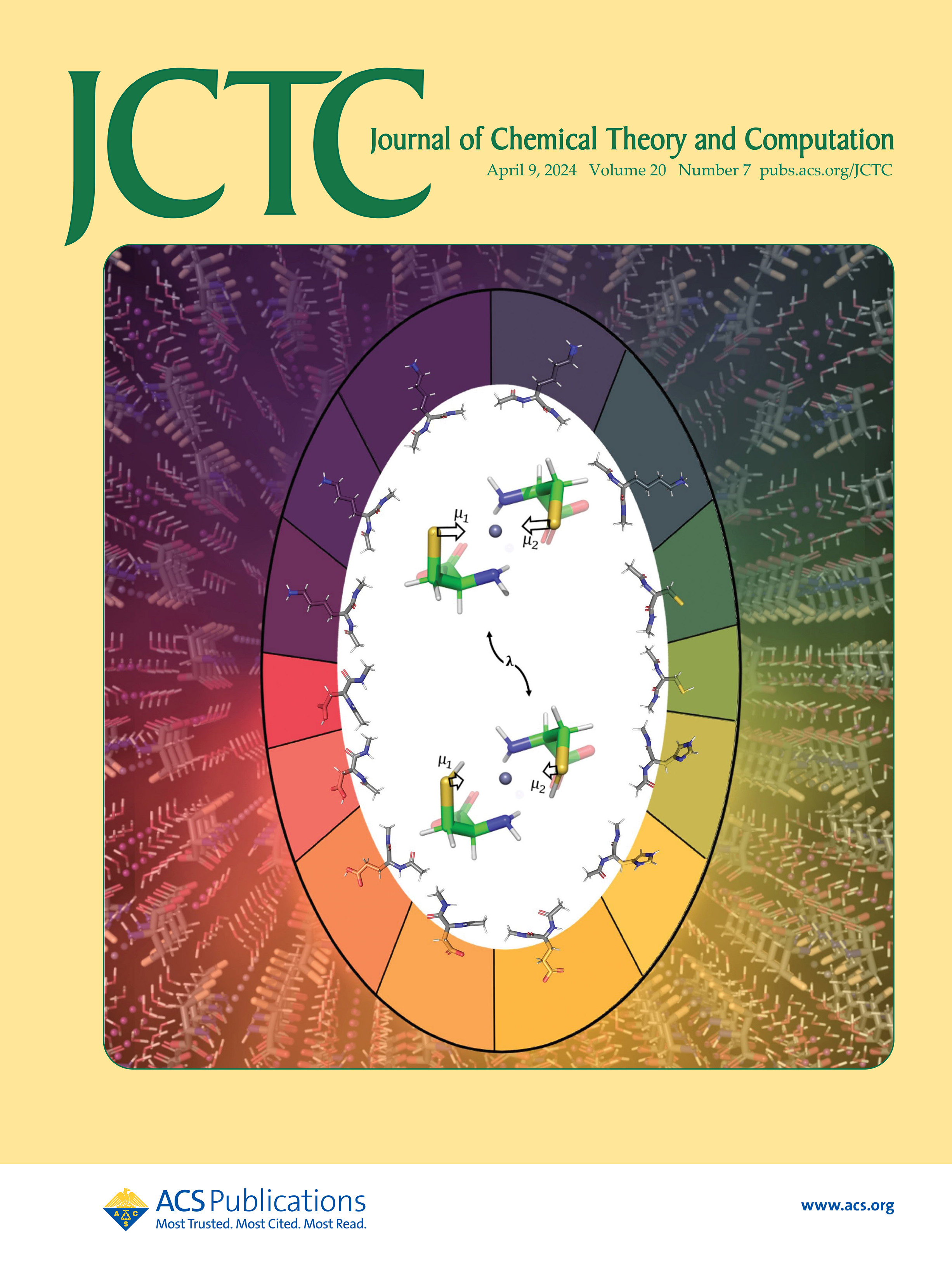| Year |
Publication |
|
2024
|
Gogal, R., Nessler, A., Thiel, A., Bernabe H., Corrigan Grove, R., Cousineau, L., Litman, J.,
Miller J., Qi G., Speranza M., Tollefson M., Fenn T., Michaelson, J., Okada, O., Piquemal, JP., Ponder, J.,
Shen, J., Smith, R., Yang, W., Ren P. and Schnieders M.
Force Field X: A Computational Microscope to Study Genetic Variation and Organic Crystals Using Theory and Experiment
Journal of Chemical Physics
2024, 161, 012501.
|
|
|
Thiel, A., Speranza, M., Jadhav, S., Stevens, L., Unruh, D., Ren, P., Ponder, J., Shen, J. and Schnieders,
M.
Constant-pH Simulations with the Polarizable Atomic Multipole AMOEBA Force Field.
Journal of Chemical Theory and Computation
2024, 20(7), 2921-2933.
|
|
|
Nessler, A., Okada, O., Kinoshita, Y., Nishimura, K., Nagata, H., Fukuzawa, K., Yonemochi, E. and
Schnieders, M.
Crystal Polymorph Search in the NPT Ensemble via a Deposition/Sublimation Alchemical Path.
Crystal Growth & Design
2024 24(8), 3205-3217.
|
|
2023
|
Corrigan, R. A., Thiel, A. C., Lynn, J. R., Casavant, T. L., Ren, P., Ponder, J. W., and Schnieders, M.
J.,
A Generalized Kirkwood Implicit Solvent for the Polarizable AMOEBA Protein Model.
Journal of Chemical Physics
2023, 159, 054102.
|
|
Tollefson, M. R., Gogal, R. A., Weaver, A. M., Schaefer, A. M., Marini, R. J.,
Azaiez, H., Kolbe, D. L., Wang, D., Weaver, A. E., Casavant, T. L., Braun, T. A.,
Smith, R. J. H., and Schnieders, M. J.,
Assessing Variants of Uncertain Significance Implicated in Hearing Loss Using a Comprehensive
Deafness Proteome.
Human Genetics
2023, 142, 819–834.
|
|
2022
|
Nessler, A. J., Okada, O., Hermon, M. J., Nagata, H., and Schnieders, M. J.,
Progressive Alignment of Crystals: Reproducible and Efficient Assessment of Crystal Structure Similarity.
Journal of Applied Crystallography
2022, 55, 1528-1537.
|
|
Dybeck, E. C., Thiel, A., Schnieders, M. J., Pickard, F. C. I. V., Wood, G. P. F.,
Krzyzaniak, J. F., and Hancock, B. C.,
A Comparison of Methods for Computing Relative Anhydrous–Hydrate Stability
with Molecular Simulation,
Crystal Growth and Design
2022, 23, 142-167.
|
|
2021
|
Corrigan, R. A., Qi, G., Thiel, A. C., Lynn, J. R., Walker, B. D., Casavant, T. L.,
Lagardere, L., Piquemal, J.-P., Ponder, J. W., Ren, P., and Schnieders, M. J.,
Implicit Solvents for the Polarizable Atomic Multipole AMOEBA Force Field.
Journal of Chemical Theory and Computation
2021, 17 (4), 2323-2341.
|
|
2019
|
Tollefson, M. R., Litman, J. M., Qi, G., O’Connell, C. E., Wipfler, M. J.,
Marini, R. J., Bernabe, H. V., Tollefson, W. T. A., Braun, T. A., Casavant, T. L.,
Smith, R. J. H. and M. J. Schnieders,
Structural Insights into Hearing Loss Genetics from Polarizable Protein Repacking.
Biophysical Journal
2019, 117 (3), 602-612.
|
| |
Litman, J. M., Thiel, A. C., and M. J. Schnieders,
Scalable Indirect Free Energy Method Applied to Divalent Cation-Metalloprotein Binding.
Journal of Chemical Theory and Computation
2019, 15 (8), 4602-4614.
|
|
2016
|
Nessler, I. J., Litman, J. M., and M. J. Schnieders,
Toward Polarizable AMOEBA Thermodynamics at Fixed Charge Efficiency Using a Dual Force Field Approach.
Physical Chemistry Chemical Physics
2016, 18 (44), 30313-30322.
|
|
Bell, D., Qi, R., Jing, Z., Xiang, J. Y., Mejias, C., Schnieders, M., Ponder, J., and P. Ren,
Calculating binding free energies of host-guest systems using AMOEBA polarizable force field.
Physical Chemistry Chemical Physics
2016, 18 (44), 30261-30269.
|
|
2015
|
LuCore, S. D., Litman, J. M., Powers, K. T., Gao, S., Lynn, A. M., Tollefson, W. T. A., Fenn, T. D.,
Washington, M. T. and M. J. Schnieders,
Dead-End Elimination with a Polarizable Force Field Repacks PCNA Models.
Biophysical Journal
2015, 109 (4), 816-826.
|
|
Shi, Y., Schnieders, M. J., Piquemal, J.-P., and P. Ren,
Polarizable Force Fields for Biomolecular Modeling.
Reviews in Computational Chemistry
2015
Edition: 28, Publisher: Springer, Editors: Kenny B. Lipkowitz
|
|
2014
|
Park, J., Nessler, I., McClain, B., Macikenas D., Baltrusaitis, J. and M. J. Schnieders,
Absolute Organic Crystal Thermodynamics: Growth of the Asymmetric Unit into a Crystal via Alchemy.
Journal of Chemical Theory and Computation
2014
10, (7), 2781-2791.
|



